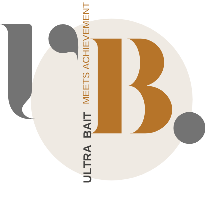In the dynamic world of business, the efficient management of buying and selling activities is crucial for the success of any organization. Buy & Sale Management (BSM) encompasses a range of strategies, processes, and tools that enable businesses to optimize their procurement and sales operations, ensuring that they acquire the right goods and services at the right time and price, while maximizing sales and profits.
Key Components of Buy & Sale Management
BSM encompasses a broad spectrum of activities, including:
-
Demand Planning and Forecasting: Accurately predicting future demand for goods and services is essential for ensuring that the right quantities are available to meet customer needs, while minimizing inventory costs.
-
Supplier Sourcing and Selection: Identifying and selecting qualified suppliers who can provide high-quality goods and services at competitive prices is critical for maintaining supply chain efficiency.
-
Procurement and Purchasing: The process of acquiring goods and services from suppliers involves negotiating contracts, managing purchase orders, and ensuring timely delivery.
-
Sales Forecasting and Planning: Predicting future sales is essential for planning production, inventory levels, and staffing requirements.
-
Sales Order Management: The process of managing customer orders, from order placement to fulfillment and delivery, ensures that customers receive their products or services as expected.
-
Sales Analytics and Reporting: Tracking and analyzing sales data provides valuable insights into customer behavior, market trends, and sales performance, enabling data-driven decision-making.
Benefits of Effective Buy & Sale Management
Implementing effective BSM practices can bring numerous benefits to businesses, including:
-
Reduced Costs: By optimizing procurement processes and negotiating better deals with suppliers, businesses can significantly reduce their overall costs.
-
Improved Inventory Management: Accurate demand forecasting and efficient inventory management practices help businesses minimize excess inventory and stockouts, reducing carrying costs and ensuring product availability.
-
Enhanced Customer Satisfaction: Efficient order processing, timely delivery, and effective customer service contribute to increased customer satisfaction and loyalty.
-
Increased Sales and Profitability: By optimizing sales processes, identifying new sales opportunities, and analyzing customer data, businesses can boost sales and profitability.
Tools and Technologies for Buy & Sale Management
A variety of tools and technologies can be leveraged to enhance BSM practices, including:
-
Enterprise Resource Planning (ERP) Systems: ERP systems provide a centralized platform for managing procurement, sales, and other business processes, integrating data and streamlining operations.
-
Supply Chain Management (SCM) Software: SCM software helps businesses optimize their supply chains, from sourcing and procurement to transportation and logistics.
-
Customer Relationship Management (CRM) Systems: CRM systems provide a centralized repository for customer data, enabling businesses to track interactions, manage sales leads, and provide personalized customer service.
-
Business Intelligence (BI) and Analytics Tools: BI and analytics tools enable businesses to analyze large amounts of data, gaining insights into customer behavior, sales trends, and procurement patterns.
Conclusion
Buy & Sale Management is a critical component of business success, enabling organizations to optimize their procurement and sales operations, reduce costs, enhance customer satisfaction, and increase profitability. By implementing effective BSM practices and leveraging appropriate tools and technologies, businesses can gain a competitive edge in the ever-evolving marketplace.



